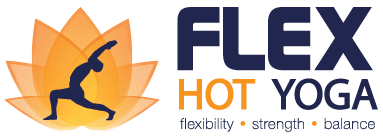Posture of the month: Handstand (Adho Mukha Vrksasana)
Come fly with me let’s fly… let’s fly away!
Sounds familiar? It will forever be Frank Sinatra’s voice that will ring in our ears when reading these lines. He wasn’t quite a yogi and probably didn’t refer to handstands when he sung it… but here we are, for another round of ‘taking flight’ the yogi way! It’s handstand time this July folks, and we are excited to help you get there, if you haven’t already!
In Sanskrit, the Handstand is called Adho Mukha Vrksasana, which means 'Downward Facing Tree' (from adho: downward, mukha: face, vrksa: tree and asana: posture), because in its basic form, it is the exact inversion of the regular tree posture.
We have written about it on this blog many times, so this time, let’s delve into when not to practice handstands!
Benefits of practicing the handstand
Let’s start with a quick recap: Practicing handstands requires a certain amount of flexibility, strength and body / breath awareness. This is what we will focus on in class for all the month of July. Once you master the different elements, in tying all of them together, you are likely to experience the following benefits:
(1) Improve your strength and flexibility
(2) Stimulate your adrenal glands and cardiovascular system
(3) Increase your focus and balance
(4) Expand your lungs and increase prana, for more energy and and deeper breathing
(5) Lengthen your spine to help reverse spinal degeneration
(6) Release the buildup of lactic acid in your muscles
(7) Activate your parasympathetic nervous to release stress
(8) Attune more clearly to your body and mind, and gain confidence and a fresh perspective in the process
(9) Can help improve symptoms of depression
(10) As a mild inversion, it can help promote cardiovascular endurance
(11) Activate your crown chakra (sahasrara)
Contraindications - When to not practice handstands
Health and strengthening as yoga may be, you have to be careful to know your limits, especially when it comes to physically strenuous postures, and inversions, where your heart ends up above your head, making it harder to pump your blood. Please first consult with your doctor if you are experiencing any of the following issues:
Heavy migraine headaches. While inversions can be great to alleviate milder headaches, they can trigger migraine episodes. So better hold off and ask your yoga teacher for a less intense alternative posture.
High blood pressure and heart conditions. If medicated well, you might still be able to go ahead practicing handstands, but definitely first consult with your cardiologist.
Carpal tunnel syndrome or any issues with your hands, wrists or joints that would be bearing weight during your practice.
Menstruation and pregnancy aren’t illnesses, but usually not the best time to practice handstands. Better opt for a less strenuous variation.
Back, neck and shoulder injuries are another reason to take it easy, especially if you have bones that are still healing, or are experiencing inflammation of any kind that could get aggravated.
Eye conditions incl. cataracts or retinal detachment need to be handled carefully. Handstands (and any inversions) increase the pressure on your inner eye, and thus should be avoided.
Tumours, brain aneurisms, strokes or other symptoms associated with increased ICP (intracranial pressure). Tread carefully when it comes to advanced yoga postures like this, and again, consult your specialist doctor before practicing Adho Mukha Vrksasana.
So are you ready to take flight this month? Then come along to Flex regularly and practice with us! There are over 25 classes/week, and we will practice Adho Mukha Vrksasana daily during all of July 2023!
Our gratitude for their insights this month goes to the team at Biyome.com and to Tummee.com for their excellent in-depth insights on yoga poses.





